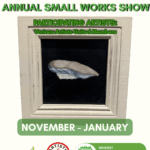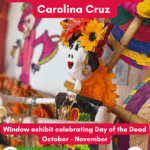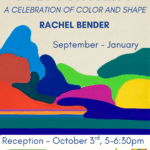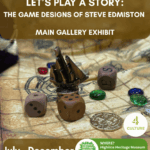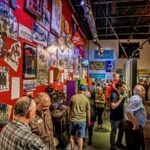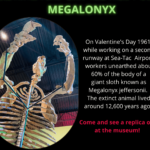Interview with Florence Totten
at her home in Burien
2011 May 6
Interviewer Barbara McMichael
BM: My name is Barbara McMichael and I am interviewing Florence Totten. The date is May 6, 2011. We are having a conversation in her home in Burien.
So, let’s start out, Mrs. Totten, why don’t you tell us a little bit about when you were born and where.
FT: I was born April 3rd, 1920 in Mt. Vernon, Washington. I was born at home in a farmhouse.
BM: Did you grow up on a farm then?
FT: I grew up on a farm about a mile and a half out west of Mt. Vernon. My dad had all kinds of — he really wasn’t a farmer, he was more of a dealer in livestock. He milked cows and shipped milk and all kinds of things. But later on he dealt in horses, mostly.
BM: And that was before the Skagit River Valley had a big reputation as a bulb growing place. Isn’t that so?
FT: They were mostly dairy farmers in the Skagit Valley. The farms up there are just wonderful. My dad, you couldn’t find a rock on his place. The top soil was so deep and wonderful. We had every kind of chicken and duck and goose and beef and sheep and everything.
Then we went through the depression. We never were worried about food. My grandfather and my grandmother were on the same place. I grew up with grandparents. So we always had lots of food. But I can remember in high school, I think I had two skirts. We bought our shoes in the spring. My friend and I got a pair of Buster Brown, wonderful shoes. Nobody seemed to mind, everybody was in the same position. So it was fine.
BM: I’m sure you got put to work on the farm as a child, you got to do some chores?
FT: I never did milk a cow. My dad said “You don’t need that”. But I’ve done a lot of things with the horses. We used to ride a lot. Then he had a lot of work horses. He’d go east of the mountains and come with big loads of work horses. Then, what happened, the farmers changed eventually and bought tractors. So it made a big difference. I know he rented the land at Burlington. We had all these work horses. Then he was up in Ferndale at one time, and Lynden.
BM: So describe a little about what those work horses did. They pulled plows?
FT: Oh, yes, the farmers used horses for plowing, and whatever, and bringing in the hay. Dad used to raise a lot of hay for his stock that he had. They had big wagons. You’d pile the hay on these big wagons.
BM: Would he lease the horses out, or something? Or did he go around and work his team?
FT: No, he didn’t work for others. He did it for himself. He sold and traded. I know when we got married, what my dad did, when we first were married we didn’t have a car. We were in Seattle and didn’t have a car. But he traded off a couple of cows and bought us a car. So that’s what he did. It was before they had a lot of auctions. He was kind of in the middle getting animals and things for other people. He’d trade, during the depression, he would trade an animal or whatever he was doing, and we’d have wood. So there was a lot of bartering going on during the depression.
BM: It seems like in a farm town though that people were affected by it, but not in the way that there were bread lines in the cities.
FT: Not affected by food. We always had lots of food because we had a big garden.
BM: Did people lose their farms? Did you know of anybody who lost their farm?
FT: Not so much in Mt. Vernon. Mt. Vernon was an area that really everybody more or less owned their own places. At that time there was a lot of dairy. Well then the dairy was sold over the years. The Hollanders from up around Lynden, have come down, because of the ground and everything, and they raise all of these beautiful tulips. It’s wonderful up there.
BM: It’s stunning to look at.
All right, so tell me a little bit about going to school. You went through high school in Mt. Vernon?
FT: I went to Mt. Vernon High School.
BM: What do you particularly remember about being a school girl. Are there any memories that particularly stand out for you?
FT: Well, I did a lot of sports. When I went to school in grade school, it was up to the 8th grade in a country school. Then we went to Mt. Vernon High School. All these different country schools ended up in Mt. Vernon High School. Then when we played sports we played soccer and baseball and basketball. We had tennis and archery and all kinds of things. The girls all played and we played other schools. We played Anacortes, and Burlington, oh I forget all of them. But it was real competitive. We really had a good time.
BM: Tell me a little bit, I’m surprised to hear you say you played soccer. Because I thought that was something that came in in the ’70’s or something.
FT: We played soccer, but it was indoor soccer in the gym – didn’t play outside. I forget how we played it, but I think it was divided some way. I know I fell on my knees, hurt my knees. We had shin guards on. But, yes, we played soccer. Then after that it seemed like, when my daughter came up, there wasn’t the sports here for my daughter like I went through. I played everything. And then they didn’t have the opportunity and they didn’t play other schools. We played other schools. We really had a good time. We had rallies all on Friday nights. We’d have a big rally when the boys would be having a big game. We went all through Mt. Vernon holding hands and went through the theater and out.
BM: Just a big parade, huh?
FT: It was fun.
BM: Well, did people come to the girls’ games as well as the boys’?
FT: Oh, yeah, it was the same as the boys.
BM: That’s really neat to hear.
FT: It was really neat.
BM: So what got you out of Mt. Vernon? When did you leave Mt. Vernon?
FT: I went to beauty school.
BM: Where was that?
FT: To Mary Stone’s, in Seattle.
BM: Okay, tell me a little about that.
FT: Well, it was 2,000 hours of work. It was a lot to do. And you took state exams, which was one whole day for hair cutting. It was quite a thing to go through. Then I worked in Seattle. I met my husband in Seattle.
BM: How did you meet him?
FT: I met him at the Crescent Ballroom. The old-fashioned dances.
BM: Where is the Crescent Ballroom located?
FT: It was on 6th and I had a roommate.
BM: Where were you living at the time?
FT: I was living up on Belmont. Betty Burton, a friend of mine from Arlington, the two of us together.
BM: And did you have an apartment with a Murphy bed?
FT: Yes, we did. [Laughter]
BM: I had those too.
FT: It was the nicest apartment.
BM: I don’t suppose it was the Sir Lancelot Apartments, was it? Because I lived up on Belmont.
FT: I know the address, it was 1619 Belmont . . .Consulate Apartments. With the Murphy bed. A cute little, it was ideal because from the main room there was a little kitchen. Then for the bathroom you went in this great big closet and the bathroom was off of the closet. So you could be private, and still have a roommate and go and do your thing.
BM: Very neat. So tell me about this dance. What sorts of dances were you dancing at the ballroom?
FT: Dancing at that time? Circle Two, Barcelianna (sp?), it wasn’t square dancing. Oh and the Schottische and the Polka and all those.
BM: Did you have a favorite band that you liked to dance to?
FT: No not necessarily, just so it was music. We went to the Trianon on 6th Avenue, and we went out to the Spanish Castle.
BM: You did come out here to the Spanish Castle?
FT: Oh yes.
BM: Well tell me a little bit about that. How was that? How did you get out here? Did you drive?
FT: No, I didn’t have a car, but friends had cars. There would always be a full car because not everybody had cars.
BM: Was it kind of a trek to get from downtown Seattle, out to the Spanish Castle?
FT: It was a long ways.
BM: You came out Highway 99.
FT: Highway 99. One time I remember we went out to Maple Valley, to Lake Wilderness. I thought we’d never get there. [Laughter]
BM: Roads were different back in those days.
So, tell me a little bit about your courtship. When you and your husband were courting.
FT: Glenn is from Idaho. He came out here to work. He was living with a friend. Actually, it was his future brother-in-law. But I met Glenn at the dance. What happened, my mother and my stepfather lived east of the mountains. They came over to visit me. It was Valentine’s, and Mother loved to dance. My stepfather didn’t like to dance, he liked to go to shows. That was fine. So he took us there and so my mom and I both danced with Glenn. [Laughter] He thought that was so fun. But we made a date for two weeks, because I went home about every week to see my dad and grandparents. Anyway, that’s where I met him.
BM: Now was this during World War II at this point?
FT: The war hadn’t broke out yet. It was in ’40 I met him, ’40 or ’41. I didn’t know if I’d go back in 2 weeks or not. I thought, “Well we’ll see.” So when I went back to meet him, my roommate went with me. I was not going there by myself. So he took us both out for treats afterwards.
BM: Where did you go for treats? Where were good places to go?
FT: I forget where it was. It was a little restaurant down, somewhere. We walked up to the apartment because he didn’t have a car either. He lived in a boarding house up on Capitol Hill.
BM: So at least you were both located on Capitol Hill.
FT: We were both working up there.
BM: Were you working up there, or downtown?
FT: I worked on Capitol Hill. I worked on Broadway at the Rita May Beauty Shop.
BM: What was that street like back then?
FT: It was lovely. There was a big market up there, a couple of big markets, and our beauty shop was up there. There was a bowling alley up there, and a lovely furniture store, and a man’s hat shop.
BM: That’s important.
FT: Yes, they had hat shops in those days for gentlemen. Fellows wore hats. It was nice. All of Broadway and then it went into Tenth, and Tenth was really pretty. It went on down.
BM: How long did you and your husband date before he popped the question? Or did he?
FT: Oh, a year and a half. We were married in ’42.
BM: In Seattle, or in Mt. Vernon?
FT: We were married in Mt. Vernon. At that time it was the Methodist Church and now it’s not there anymore.
BM: Did you decide to keep living in Seattle?
FT: Yes, we moved into my apartment because my roommate got married on May 30th and I got married in June. So it worked out fine.
BM: How long were you in Seattle and what brought you down to Burien?
FT: Well, at one time Glenn worked in Sun Valley, after he was out of high school. He was also in the CCCs. Then his mother was ill so he was let go from there.
BM: What kind of work did he do in the CCC?
FT: He worked in the dining hall, a busboy and all that kind of thing. When he came to Seattle he worked in the athletic club.
BM: Oh, Washington Athletic Club?
FT: Washington Athletic Club. He had charge of all the busboys, and all that sort of thing. But he kept trying to get into Boeing. He said he went to Boeing so many times, they’d say “Hello Glenn” when he walked in. Then he finally got on. The war had started, and I was busy in my shop. Where I was, there were 5 girls. But with the war, we felt guilty, not working in the war effort. So I put in for that, and I worked in Boeing.
BM: What did you do?
FT: Well, I was a bucker to start with. So I worked on B-17s.
BM: No kidding! Well, tell me a little bit about that work. What does a bucker do?
FT: Well, you have a riveter and a bucker. The bucker was on the back of the rivet. The riveter is on one side. I would be inside and the riveter would be on the outside.
BM: Cause you’re tiny so you could fit into places.
FT: Yes, all kinds of places to go. I couldn’t see him and he couldn’t see me, but we’d do like this [knock on the table]. That was fine if it was, if it wasn’t you’d hit. So you had kind of signals that you did. Then Glenn was a mechanic. Well, at first he was doing the riveting too, but he was a mechanic. They opened up the Bellingham branch plant and we put in for that because my father was in Mt. Vernon. We’d try to go and help him. There was no help for the ranch or anything. We both got to go to Bellingham. But when they brought us into the shop that was going I worked for him. They never let husbands and wives work together. But we worked together and we got along fine and they left us alone. So we went to Bellingham that way. But then they put him in as a mechanic and I ended up making bomb racks in Bellingham.
BM: And was that for the B-17’s?
FT: That was for the B-17, the bomb racks. I worked on other things too, but that was one thing. They used cold rivets. You’d get the rivets out of the freezer. It was a big thing and it was a hydraulic deal. I had a big muscle [indicating arm].
BM: I bet, you could have been on the Rosie the Riveter posters.
FT: Yeah, this big thing came down and you squeeze this and your helper puts these in and helps you with it. And it was heavy.
BM: Now did the cold affect your fingers in any way?
FT: No, I never touched them. She put them in and I did the things. It was quite a bit.
BM: It sounds like fatiguing work. Did it tire you out?
FT: Oh, you put in 8 hours. Sometimes we worked 7 days and we didn’t like that too well. That’s too much.
We moved to Bellingham and got on a little farm. My dad had all these chickens, and we had a cow, and a pig, and goats. They were crazy, the goats, and everything. So it was a lot of work.
BM: I can imagine. A full time job and then come home and take care of the animals.
FT: Then my husband kept getting deferred because he was doing work. Then they called him in the service. In the mean time I’d had our little girl. I worked there. Then the doctor said, “What are you doing?” I said “Well I’m a riveter.” And he said “You quit your job.”
BM: So what was your daughter’s name and when was she born?
FT: Merrily was born in 1945. Then Glenn was in the service for only a year, but I went back home while he was in the service. Then we came back to Seattle because he went back to Boeing.
BM: Back to work for Boeing. The war jobs had dried up obviously and so he was doing some other kind of work?
FT: No, actually he was on experimental a lot of it. In fact, Glenn worked on the very first, this is later on, he worked on the very first refueling in the air.
BM: Oh, my goodness! Wow!
FT: So that was a long time ago. But this big thing that came down, he worked on that. Very interesting. We were here at that time [in Burien]. When we bought this house with Burien —
BM: What year was it?
FT: 1947
BM: So your little girl was just beginning to toddle.
FT: She was just barely. We found this house because we lived on First Avenue. We took care of a house for a friend of ours. He was our boss or supervisor in Bellingham when we were up there. They came back to their house on First Avenue right across on 128th. So we got acquainted with this area. Frank and Madge had a fishing boat. They went to Alaska and we took care of their house. That’s how we ended up in the south end. When they came back we found this house. But this house was 520 square feet and it was like a garage.
BM: Well, you’ve done some work on it over the years, then.
FT: We wanted the land and we had four lots. This house was on one lot. We bought four lots.
BM: Now this house, for the purposes of posterity, is on 16th Avenue SW, just north of 160th.
FT: Across from us there was an old house, it’s still there, that little old house over there. It was all woods, everyplace, clear down. The road that was in front was like a little gravelly road. And the electricity came from 160th on one wire over to me. I couldn’t have an electric stove, so I got a gas type stove. This was all nothing on this block. There was an old house on that corner.
BM: Now Gregory Heights Elementary School is just down the street by about a block or so, isn’t that right?
FT: Yes, it’s right over here, across from my neighbor’s house.
BM: Oh, yeah, you can even see it here.
FT: They built Gregory Heights on 19th. They built that in 1952 because my daughter went to Lake Burien for first grade. No Kindergarten, they didn’t have Kindergarten.
BM: How perfect then, when Gregory Heights opened up.
FT: Yes, that was a relief, because that was a long ways for her. She took the bus and she was little. I’d had my son in 1950 so I had a baby at home. So she took the bus on her own and went to school. Then Gregory Heights was over here. I loved it because I could see the playground. There was nothing on this block.
BM: So you could watch when your children went out at recess. You could see them.
FT: Yes, I could see all these kids. This block of mine ended up with 17 kids. There was 6 over here and my friend across the alley, there was 3 and 3.
BM: What was the names of some of the families who lived on this block? Can you remember them?
FT: Across the alley from me, was Vi Bills, Vi and Red Bills. They had 3. Then it was Ladelle Logson (sp?) and Al. And they had 3, I think it was, 3 or 4. I just lost Ladelle last year and Vi a couple years ago. Right across from me is Shadeens (sp?), he wasn’t there. Across from me in 1968 they built two houses, right behind. Marie and George Shadeen, but their children were older. When I came here the house that had the family was McInroys and that house was here before me. On 160th the Day family, Frank Day, he was a fireman for years and years. They had the 3 children. So we had a lot of kids. On the other side of the alley was all woods. So they had a wonderful time. Across 16th was all woods until they built Gregory Heights, then that was a playground. But this was all woods.
BM: So what kinds of wildlife did you see?
FT: We had pheasants on our place. Glenn had to clear all this. We had more than twelve big virgin stumps on our land when we first bought this. And all kinds of Madronas, all kinds of trees. He cleared it all. Then we tried to burn . . . there was a huge stump where your car is and we tried to burn it. Well you just can’t burn a big stump like that. It was as big as this table. So he said “I’ll have to dynamite them.” So, he learned how to dynamite. He goes down to the library.
BM: Where was the library at that time?
FT: I don’t remember.
BM: It wasn’t the one on 153rd.
FT: No, no. It was, I don’t remember where it was. It was different because Burien was different.
BM: Anyway, he went to the library and checked out a book.
FT: And he learned how to dynamite and he blew up all these stumps. We weren’t a city or anything. On top of that he had to clear everything and underneath part of this was this huge, big cedar tree. When he got through he made fence posts out of that cedar tree and we had a fence clear around everything. My husband worked hard. On top of working. And I worked hard.
BM: Well, tell me a little bit about the community of Burien. What do you remember when you had young children, what was it like?
FT: I remember I liked Mrs. Whitney. Do you remember Mrs. Whitney? It’s a little store in old Burien. The dearest lady. She had this store that had everything in it. I bought yarn from her because I was making afghans. And saving green stamps. The tin shop was a tin shop, and the plumbing was Rose and Don. The feed store, we got our feed. On our place we had chickens and geese. We had Chinese geese one year and they were very different. They brought the kids over for field trips to see all the stuff. And rabbits. It was nice. We had like a little farm business here.
BM: So when did you get back to work yourself?
FT: I did not work. I was going to go to work as a beautician. And then I had my little boy in 1950.
BM: Tell me again, what was his name?
FT: Terry, in 1950. So I did not go to work until he was in first grade. Well then I decided that it was time to go to work or do something else. What I did, they had an opening at Lakeview and I cashiered because I had a business background a little bit. But I got on there and then worked for two years. That was ’57, ’58 school years. Then in ’59 they opened Madrona.
BM: Tell me about working in that brand new school. What did Madrona look like?
FT: I loved Madrona. I was at Chelsea Park for two weeks. Gil Kugel was our principal. So I got ready for the school, because the school wasn’t finished, Madrona wasn’t finished. When we went out to Madrona the office wasn’t finished. I ended up in the clinic, working in the clinic because that was a little room that I could work in. I had no telephone for two weeks. The carpenters were still in there. They had two rooms that weren’t done on the lower part. So we opened up. One day we got all the furniture, and the poor custodians, they just worked so hard. One day we got all the supplies and checked all those things in. Then the teachers came. We opened up the third day. It was so much fun because everybody was, it was just a fun time.
BM: People must have just loved their brand new school?
FT: It was wonderful. And a real good principal. I had five principals before I got through. All nice people.
BM: So, there you were working in the office. Tell me a little bit about your job, working in the office. What did you have to do as the school secretary?
FT: Oh, my. Everything. Actually, I worked for the teachers a lot. I did a lot that I could do for them. Waskowitz work and getting the money and making room lists. You make room lists and when they start school you have room lists on all your doors. You just do a lot of paperwork.
BM: And that’s back before there were copiers.
FT: I had this mimeograph machine and a ditto machine. And that was about it.
BM: Kids loved to smell the ink. I remember that.
FT: A little adding machine. Of course we had the lunch, all the money for the lunches. It was just busy all the time. I started with 6 hours. Then I finally got a half an hour more. And my boss said , “Well, you’re finally getting paid. Now you get another hour.” Because you never get through. Oh, and I worked with all the PTA ladies. That was so fun.
BM: There were a lot more mothers who were staying at home back then.
FT: Yes, and they would come in and help. They were wonderful. It was always a lot going on.
BM: Now, I remember when Mr. Kugel was the principal. I remember the year I was in fifth or sixth grade, in the courtyard, there was a central courtyard at Madrona and he brought animals into that courtyard. There were ducks. Can you talk a little bit about that?
FT: There were ducks and there were little baby chickens. At first it was a wild area because it was a new school, so it was like a little forest in there. There was a huge big stump outside of the second grade room. The birds made their little nests and the kids could watch this little pair of little birds, whatever kind they were, and they hatched out and everything. It was really wonderful. Well, then they kept doing something else with this area. Then somebody put a, not a raccoon. It’s the animal that has kind of a pointed mouth. Opossum. Well, the opossum had to eat and you know what they did. He ate all the salamanders and he ate all the eggs and he ate everything in that little area. We lost all the little wild stuff. So then they did other things and finally they sort of cleaned it and planted. But it was so much more fun when it was wildlife.
BM: Another thing I remember is at Christmas time there would be record players that were placed on chairs out in the hallway, and they would play Christmas records when we were coming into school in the morning.
FT: Yes. That was nice. And we had Christmas trees.
BM: Yes, and tell about the beautiful May Teas. Remember those in the gym.
FT: Yes. We had May Teas. Mr. Kugel set the flavor of that school. The May Tea was wonderful. Well that was all the ladies when we had the May Tea. But for the children it was set so that they all had, the boys, they were all kind of dressed up that day. And the boys would pull out the chairs for the girls. We had such nice things going.
BM: I remember Mrs. Hoy was one of the mothers, she lived near the school. She would put giant bouquets of lilacs in the basketball nets. So there would be giant bouquets.
FT: Gorgeous things. The mothers did so much. It was really beautiful. I remember on Memorial Day from Mr. Kugel, the whole school walked out, there wasn’t one person who spoke or one person that made a noise or anything. The whole school walked out single file and they all walked around the flag pole and had a service. Then we all came back in. You know, raised the flag and everything. It was really nice. That was a beautiful school.
BM: How long did you work at Madrona? And where did you go next?
FT: 23 years and then I retired.
BM: All those kids wore you out.
FT: By the time I retired, they were starting the computer and we got started on that, but I never got a computer in my office. Because I’d do all the work and send it to the ad building and then that’s how they did it. I kept all the attendance for years in a big attendance book. That’s one thing I did. Typed all the report cards.
BM: Oh, really?
FT: Yes. I used to.
BM: Wow! That’s a huge job.
FT: That was a job. But it was fun. I could keep up with the kids. And correct all the big tests, and do the graphing and things. It was nice and on top of that I got to see all the kids and parents. That’s what I missed when I left.
BM: So tell me what have you been doing in your retirement.
FT: Well, Glenn retired in December. What Glenn did, he went from Boeing, into Real Estate. Then they needed bus drivers and so I said “Why don’t you go drive a bus in the mornings or something?” So in the morning he’d drive for a couple hours.
BM: Was this for Metro or did he drive a school bus?
FT: Well he did drive Metro at one time. After he left Boeing he drove Metro for six years and then he went back. We’ve done a little bit of everything. We went into business, then he decided he’d get into the Real Estate. And he did that. So I said, “Well before you go to the office why don’t you talk about helping out at the bus stop?” So he drove for the Highline District. So that worked fine. Then after he retired, what he did was just drive for the district. He drove for about 8 or 9 years, I think it was. So he liked that too.
After we both retired we had other things to do. We had some rental things. Then we had a boat storage yard that we made out of a big thing and a big lot that we bought in Des Moines. We called it the “Anchor Inn”. So we were busy afterward. We wondered how we ever went to work.
BM: I failed to ask about your children. Did they go through Gregory Heights and then Highline.
FT: Gregory Heights, Sylvester, and Highline. Terry went on, he got a football scholarship to Gray’s Harbor for two years, or a year and a half, then he went to Montana State. My daughter was going to go and she decided she got a job with Burien Chamber of Commerce. So she worked for the Chamber of Commerce right out of high school.
BM: Was her name “Totten” then, Merrily Totten?
FT: Yes. She worked for the Burien Chamber of Commerce when it was in that little area. She worked for Mr. Sennick (sp?), I think he was in Seattle Trust. That’s when Senator Jackson, and we got involved in the pageants and that kind of thing. It was really fun.
BM: So, Miss Burien Pageants and that sort of thing.
FT: Yes. I forget the girls that we had from Washington. There were two girls from Washington that year that Merrily was so busy. One was a Washington Princess and I forget the other.
BM: Maybe Seafair?
FT: So Merrily got busy doing that kind of work. So she didn’t end up going to college. She visited the colleges and she said, “Mom, I don’t think I want to go.” She said, “I’d rather do what I’m doing.”
BM: Do both of them live locally now?
FT: Merrily is in Kent. Terry was here for years and years until about 12 years ago. He does carpentry and building and he started doing these commercial buildings in the valley over here where Southcenter is. Then he went to California. He had his own business. I think it almost killed him, he worked so hard. You put all your money back into the company all the time. He worked like that about 18 years. So he went to California and worked for Turner. While he was down there he built a thirty-two story building. So he’s a superintendent and they sent him to Florida when they got through with that job. That building is across from Nordstrom’s in San Francisco. Then they wanted him to build in Florida and he built in Gainesville, he built the football stadium, the big area in the football stadium. Then he built another stadium in Raleigh, North Carolina state. They did that. Now he’s built three hospitals and he really likes that. It’s very different.
BM: Well, let’s bring it back to you. What final thoughts would you like to leave somebody looking at this in the future and thinking about it, about what life is like in 2011.
FT: Well, I have a wonderful neighborhood. I love all my neighbors. I’ve got the best neighbors in the world. I have Doug next door, the fireman. Mary over here in that new big house is head of the surgery in Highline. Caroline is a nurse on this side. I have my dear friend in the back. She’ll be 95. So this whole area right up here in Gregory Heights is so nice. I’m going to stay here I hope. I think Burien since it’s been made a city is so much better. King County never did a thing for us out here – ever. It took forever if you ever wanted to do anything. But they have been so nice and I like what they’re doing. I miss the shops. We had the nicest shopping ever.
BM: Right there on 152nd?
FT: Yes. We had the nicest shopping ever before Southcenter came. Like everybody said, we had shoe stores and we had a hat shop too. A man’s hat shop. And it’s different. This house across the street was brought from 152nd up here. It was next to that big building. That was a lovely family that moved that in. So I liked it. Then Ruth School was moved. I think Burien is lovely. But I wish we had another Bell’s of Burien.
BM: You aren’t the first person who’s mentioned that.
FT: Yes, Bell’s of Burien and the other stores were nice, that took that area, but we don’t have a good department store. Freddy’s is the only thing that we have. Fred Meyers. The little wee shops, they’re kind of specialties, so they’re more expensive.
BM: So where do you do your grocery shopping now?
FT: Well I really don’t need a lot of things.
BM: Do you still have a garden every year?
FT: I did, but it’s getting less and less. Last year I put in tomatoes and a little garden. It was too cold. I’m by myself and I don’t need a lot of things out of the garden. I’m going to plant some tomatoes. I want one of those hanging kind.
BM: My neighbors had that kind last year.
FT: My neighbors did too, and my grandson. And they’re wonderful. I have an area in the back that I can do that. But Glenn always had a lovely big garden. I felt guilty not planting because the soil is so good. And raspberries and everything. But I can’t do it. I have to have my yard taken care of and the lawn done. I can’t do what I used to do.
BM: Well, you deserve to be able to take a bit of a break now.
FT: But I love to be outside. I’m outside whenever the weather is nice.
BM: And you go for a walk with your dog every day.
FT: Every day.
BM: How old is your dog?
FT: She’s about 14 and she’s not walking so good.
BM: She’s a dachshund?
FT: Yeah.
BM: Well, you just keep her moving, that’s the trick to it all. Just keep moving.
FT: But I love Burien. I go shopping with my daughter over at Southcenter. She won’t let me drive to Seattle any more she says. Well, that’s fine with me. Traffic doesn’t bother me at all, but if she drives me, we have lunch out. So if I have an appointment down town, that’s an excuse to have lunch out.
BM: That’s a great deal.

